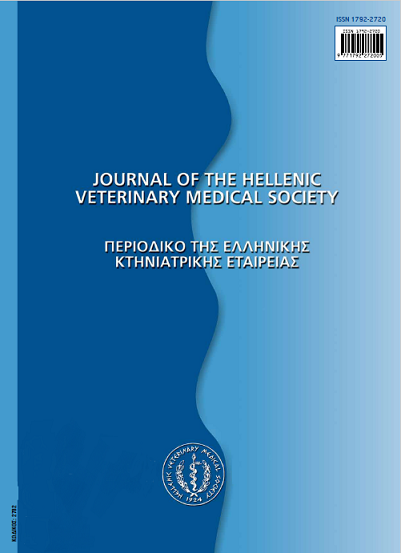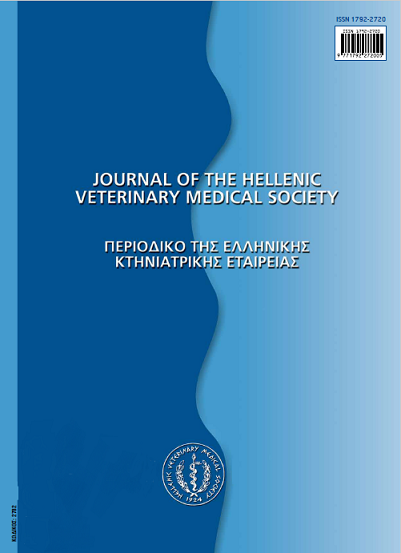Equine hyperadrenocorticism: A report of 4 natural cases
Abstract
Hyperadrenocorticism, the most common equine endocrinopathy, is the result of hyperplasia or a functional adenoma of the pars intermedia (intermediate lobe) of the pituitary gland. The study population included a 20-year old Irish hunting gelding (case 1), a 13-year old English Thoroughbred stud horse (case 2), an 18-year old intact male donkey (case 3) and a 22-year old mare belonging to a mixed breed (case 4). From a historical and clinical standpoint, the most common clinical signs were hypertrichosis (4/4), progressive loss of body weight (3/4), polyuria-polydipsia (3/4), laminitis (3/4), depression-lethargy (2/4), sway-back (lordosis) (2/4), pot-belly (2/4), bulging of the supraorbital region due to the excessive deposition of adipose tissue (2/4), hyperhidrosis (2/4) and delayed wound healing (2/4). The results of the routine laboratory testing showed lymphopenia (4/4), anemia (2/4), mature neutrophilia (1/4), monocytosis (1/4), hypertriglyceridemia (4/4), increased ALP activity (3/4), hypocalcemia (3/4) and hypoalbuminemia (2/4). Also, case 2 developed type III diabetes mellitus as a consequence of the disease. The diagnosis of hyperadrenocorticism, that was initially based on the classical clinical signs, noticed in all 4 animals, was further confirmed in 3 of them (cases 1, 3, 4) with the overnight dexamethasone suppression test. Oral bromocryptine (dopamine agonist), that was subsequently prescribed in two horses (cases 1, 4) resulted in a remarkable clinical improvement, first noticed in both animals approximately two months after the beginning of the treatment.
Article Details
- Come citare
-
KOUTINAS (X.K. ΚΟΥΤΙΝΑΣ) C. K., SARIDOMICHELAKIS (Μ.Ν. ΣΑΡΙΔΟΜΙΧΕΛΑΚΗΣ) M. N., MYLONAKIS (Μ.Ε. ΜΥΛΩΝΑΚΗΣ) M. E., HAMHOUGIAS (Κ. ΧΑΜΧΟΥΓΙΑΣ) K., FYTIANOU (Α. ΦΥΤΙΑΝΟΥ) A., DIAKAKIS (Ν. ΔΙΑΚΑΚΗΣ) N., & KOUTINAS (Α.Φ. ΚΟΥΤΙΝΑΣ) A. F. (2017). Equine hyperadrenocorticism: A report of 4 natural cases. Journal of the Hellenic Veterinary Medical Society, 55(1), 21–33. https://doi.org/10.12681/jhvms.15149
- Fascicolo
- V. 55 N. 1 (2004)
- Sezione
- Research Articles
Authors who publish with this journal agree to the following terms:
· Authors retain copyright and grant the journal right of first publication with the work simultaneously licensed under a Creative Commons Attribution Non-Commercial License that allows others to share the work with an acknowledgement of the work's authorship and initial publication in this journal.
· Authors are able to enter into separate, additional contractual arrangements for the non-exclusive distribution of the journal's published version of the work (e.g. post it to an institutional repository or publish it in a book), with an acknowledgement of its initial publication in this journal.
· Authors are permitted and encouraged to post their work online (preferably in institutional repositories or on their website) prior to and during the submission process, as it can lead to productive exchanges, as well as earlier and greater citation of published work.












